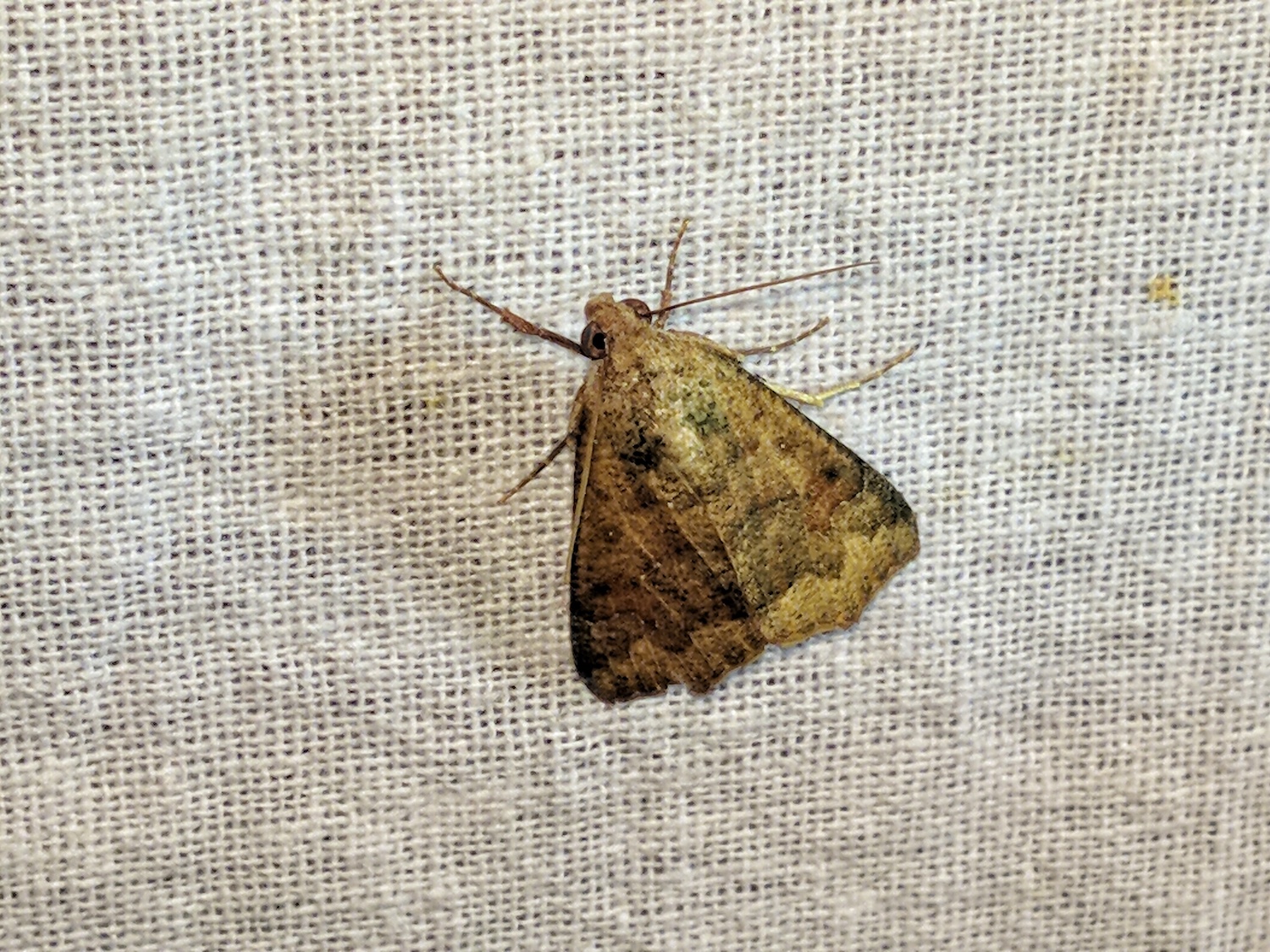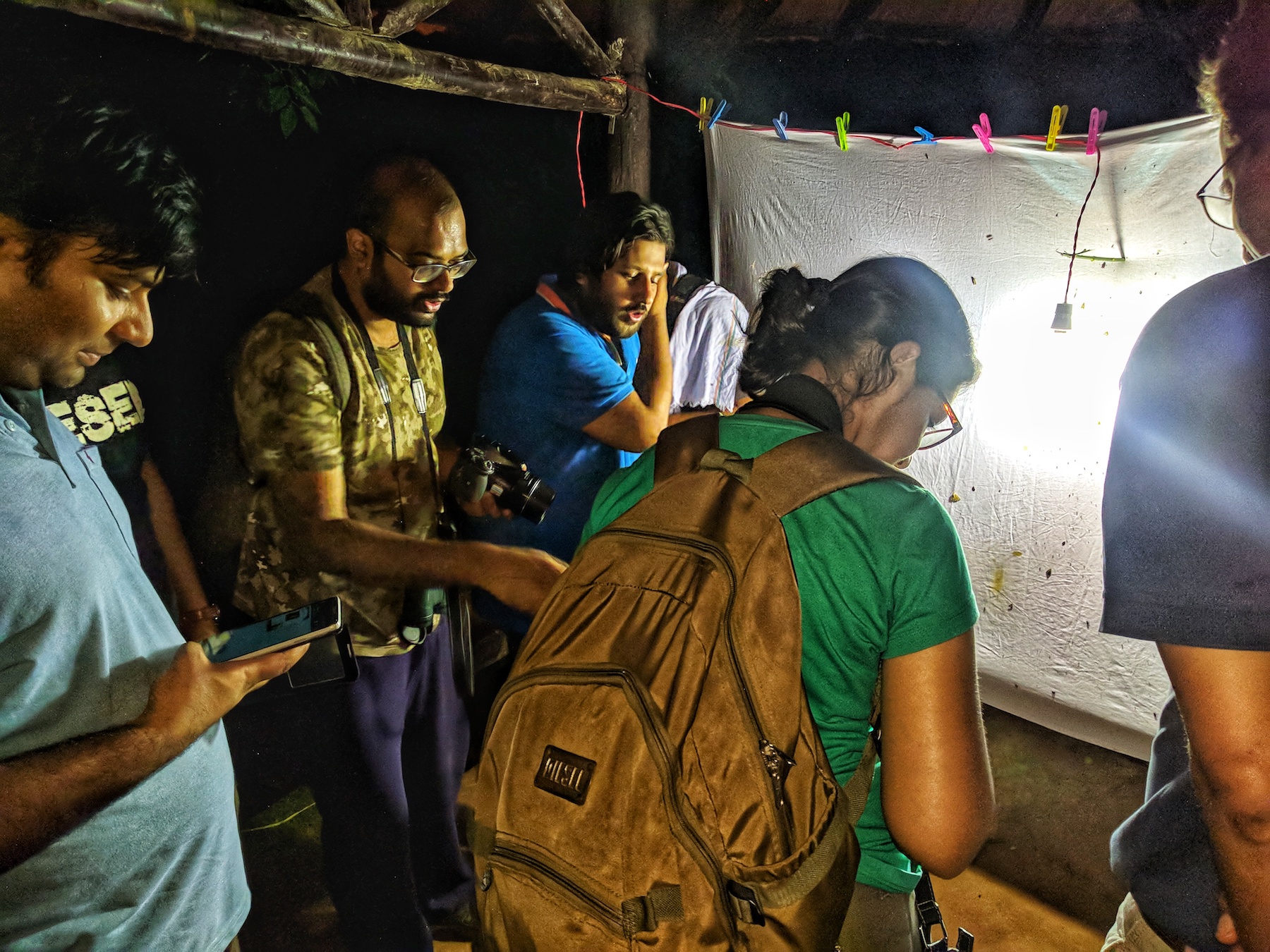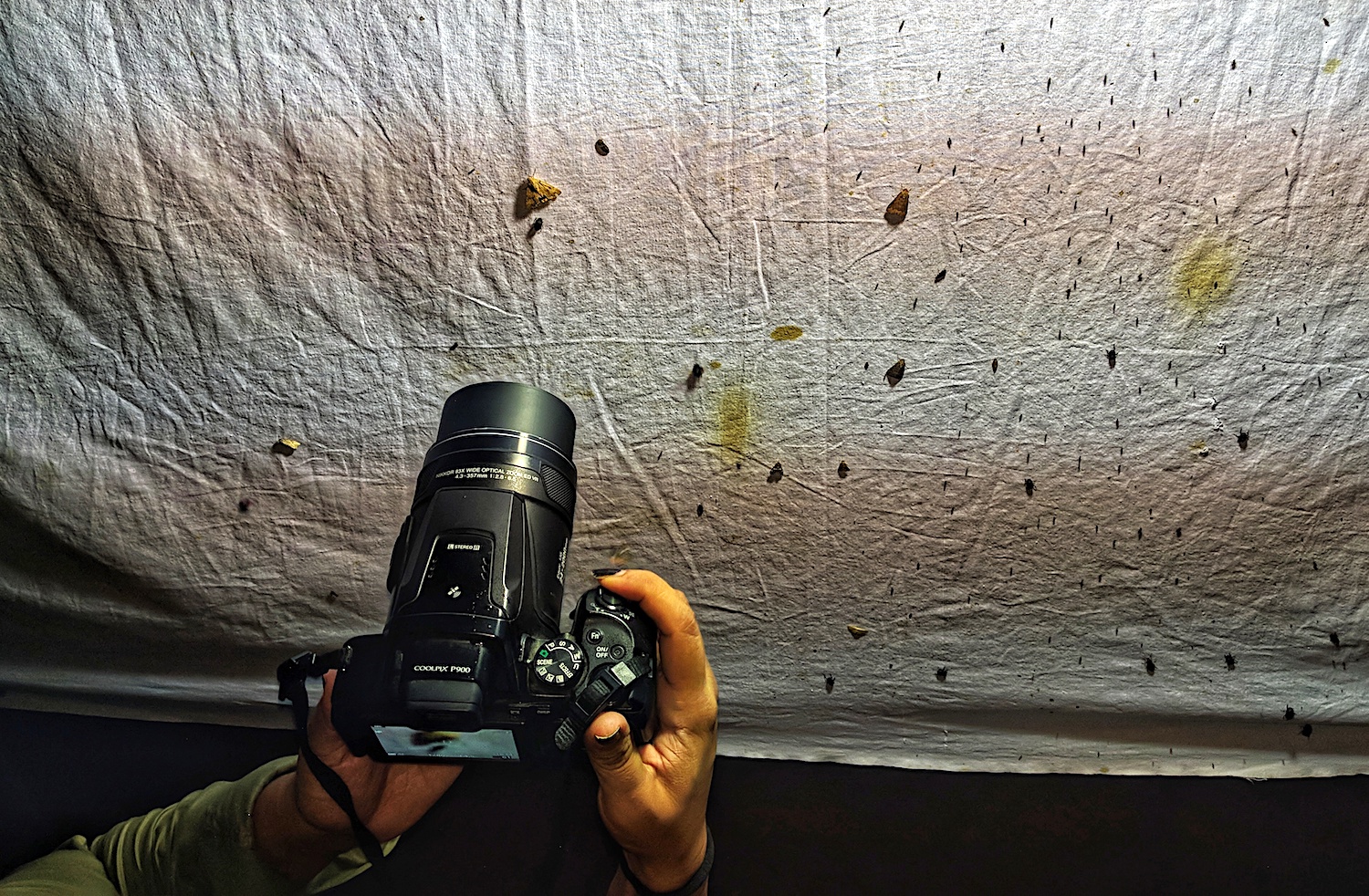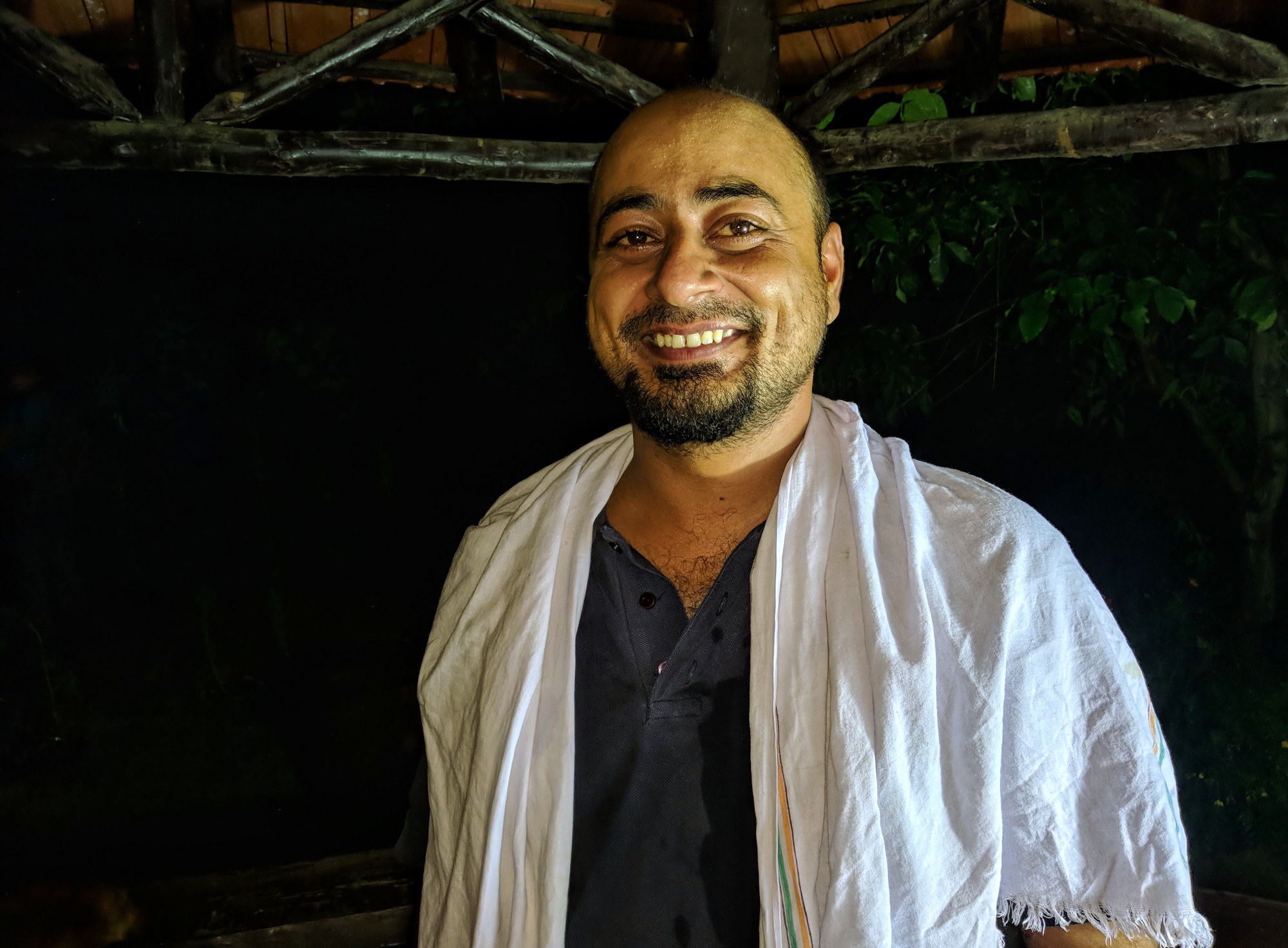The Moth Appreciation Event I Went to Had More People Than Moths
On a rainy evening in a wildlife sanctuary on the outskirts of India’s national capital, a dozen people waited near a large lit bulb among lush greenery. They had come here to appreciate moths. Jostling amongst each other, DSLR cameras held aloft, they clicked pictures of this member of the Lepidoptera family. A white curtain near the bulb acted as a screen for moth lovers or “Moth-ers”, as their Facebook page informed me.
This was the first time in my life that I saw moths getting such respect from beings as self-absorbed as humans.
The event had described moths as “among the most diverse and successful organisms on earth. Scientists estimate there are 150,000 to more than 500,000 moth species. Their colors and patterns are either dazzling or so cryptic that they define camouflage”.
There was just one small catch–only a few moths turned up for the party. “If there was no rain, a lot more would have come”, consoled Lakhan Kohli. Kohli is a member of the Conservation Education Centre at the Asola Bhatti Wildlife Sanctuary, which had organised the event to celebrate the National Moth Week, initiated by American scientists to increase awareness about the moth.

“I wanted to see more moths. Where are the colourful ones?”, asked a spectacled kid when almost all them turned out to be black. Nobody took notice.
Though we ignore moths lurking near streetlights and open drains, in dingy staircases and parks, they find their deserving space in popular art. They’ve been used as symbols in the Silence of The Lambs and as inspiration by Alexander McQueen in his dresses. In India, Urdu poets have romanticised the propensity of the parwana ( patanga in Hindi ) to lurk near the shama (fire) as a metaphor for the madness of love. The 1954 Bollywood film “Shama Parwana” starring Shammi Kapoor and Suraiya is still remembered for its timeless songs. ‘Patanga’, which released in 1949, left its mark in India’ collective consciousness for “Mere Piya Gaye Rangoon” in Shamshad Begum’s silky voice.
When I used these references at the moth party, there were no takers. Their unwavering attention was devoted to cucumber moths (which live on cucumbers) and tiger moths (which don’t live on tigers). I counted a total of ten moths which kept returning to the curtain-cum-screen to captivate the children and adults. It was mostly mosquitoes, an odd grasshopper and other insects which I couldn’t identify.

“Ye moth nahi hai. Kuch aur hai ye”, said Sunil Jain, who runs a startup selling medical devices to the US with his friends. It was his third trip to the sanctuary. “First ones to see moths though. I went to the butterfly park here but couldn’t find any butterflies”, he said. “But I hope can can catch hold of a reptile here. I have heard there are a lot cobras here.” The ground shifted slightly from under my feet.
Lakhan Kohli, who takes cares of the animals at the centre, confirmed their existence. “Once I nearly stepped over a rat snake. The other time, a Krait, one the most poisonous snakes in India, went between my feet. I was wearing sandals. If it would’ve bit me, I wouldn’t even reached the gates.”
Kohli began wearing shoes after the incident. Though earlier this month a mongoose bit him, the shoe doing little.

Vallary Sheel, an ecologist at North Carolina State University, came to the park to learn about moths. “There is so much life around that we ignore. I, like most people don’t know anything about moths. Learning about them is my way to connect with nature.”
Tanya Kumar, a nature enthusiast, got interested in moths due to a friend who was researching them. “He told me their names, differences and their astounding variety. Before that, she couldn’t even tell moths from butterflies”, she said. Kumar had come there with her son, Pranav. “I think it’s important that the next generation be connected to nature in today’s age.”
Abhimanyu Yadav, a botany teacher had come from the nearby town of Rewari. He is a regular at a bird watching walks and tree appreciation programs. “This is my first moth appreciation event of my life. Generally, we are repelled by insects, but here we are coming towards them.”

Sohail Madan, the manager at the centre, told VICE moths help in pollination and form the food for most reptiles and birds. His favourite is owl moth. “It looks like a owl with big eyes and feathers. Then there is another which mimics a hummingbird to fool the predators”. Madan informs that moths are attracted by light as they use moon for their navigation. “They are actually mistaking this bulb as the moon.”
Madan said that one of the purpose of such meet-ups is to create a ‘ethical tourist’ which in interested in other aspects of wildlife than only tigers. “I think moths are beautiful. They have wings with intricate patterns, kind of feather-like-hair and come in various shapes. Their adaptation to survive is unique in its own way”.
Follow Zeyad Masroor Khan on Twitter .
This article originally appeared on VICE IN.